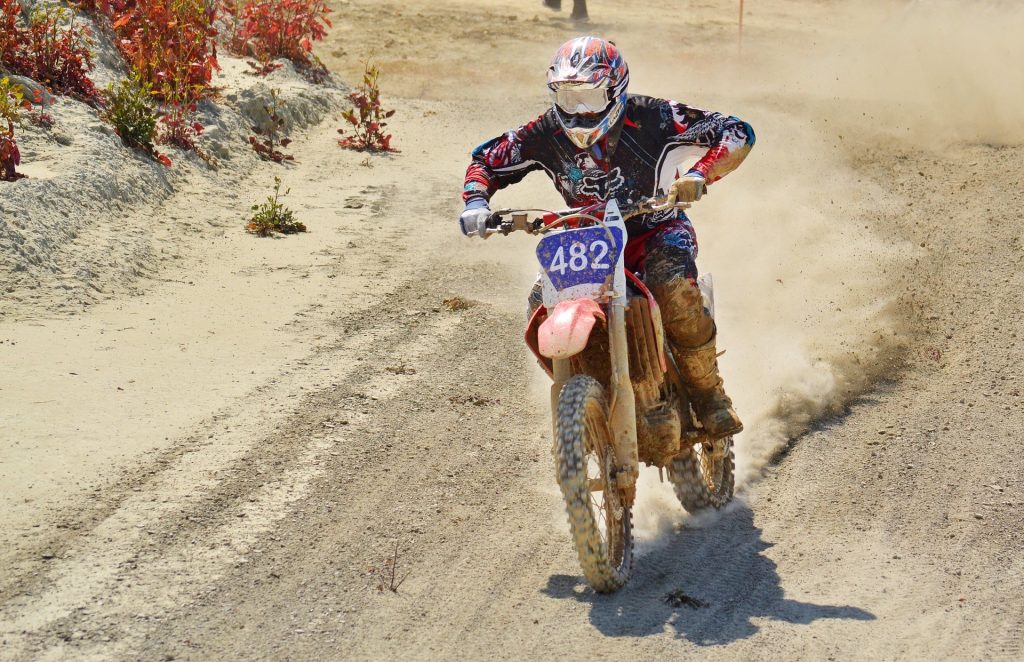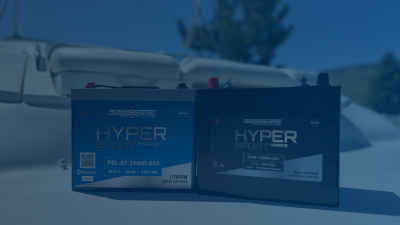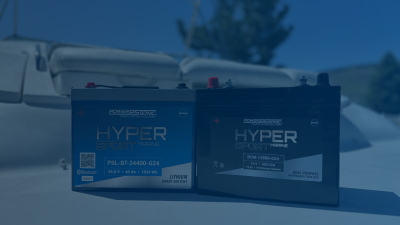Lithium Cranking Amps

Lithium Iron Phosphate (LiFePO4), used in Power-Sonic’s Lithium Power Sport batteries since 1996, is a common choice for starter batteries. Unlike SLA, lithium often omits a Cold Cranking Amps (CCA) rating because automotive CCA tests don’t apply.
CONTINUOUS POWER FROM LITHIUM
Don’t be worried about the lack of standards for lithium, because there are other factors that we can use to evaluate the two chemistries.
Lithium maintains a consistent voltage across its discharge cycle, unlike SLA batteries whose voltage drops with state of charge (SOC). This means lithium delivers the same power at 15% discharge as at 85%, making traditional voltage-based tests irrelevant. Learn more about the differences in The Complete Guide to Lithium vs Lead Acid Batteries blog.
CONTINUOUS CRANKING AMPS
What is oftentimes tested in lithium batteries is continuous cranking amps. In our Hyper Sport Pro line, we test continuous cranking amps after keeping the battery at -20°C for 20 hours and applying continuous current for 15 seconds. Unlike the JIS standard, which tests SLA batteries at -10°C for 5 seconds, this method gives a reliable indication of cold-weather performance. Always clarify whether a battery’s “CCA” refers to continuous or cold cranking amps and check the testing method used.
As indicated above, there is no true standard for cold cranking amp or continuous cranking amp testing for lithium batteries. This leaves it up to the battery manufacturers to decide how they want to test their batteries.
LITHIUM BATTERIES IN COLD WEATHER
There is a downside to lithium – it is limited by cold weather. Like SLA, lithium capacity drops as temperature decreases, extending cycle life. Unlike SLA, lithium can discharge in cold (-20°C / -4°F) but can only charge at or above freezing (0°C / 32°F). That being said, it is highly unlikely you will be charging your lithium starter battery outside in the winter. You’ll likely be charging it inside your garage, where the temperature will be above freezing.
LITHIUM BATTERY CRANKING
In part 2 of our CCA trilogy blog, we discussed continuous current with SLA starter batteries. The test for 5-second continuous current is to allow for enough time for the motorcycle’s engine to start and provides the cranking power to turn the engine over. See the graph below to examine lithium’s constant power delivery versus SLA, over the number of cranks each had before needing to be charged again. What you see below in the graph is power (measured in Watts) as it is delivered over several cranks. The power equation is P=V*I where P is Power (Watts), V is Voltage, and I is Current (Amps). One crank cycle is 5 seconds of power delivered to turn over an engine.
The testing method for the data shown in the graph below was a 5 second crank of 400Amps, waiting a short time, performing another crank, waiting a short time, etc. The test was conducted with an ambient temperature around 70° Fahrenheit.
With a lead battery (dashed line), each crank drains energy and lowers voltage, reducing power until the battery can’t crank. A lithium battery (solid line) maintains voltage as energy is used, delivering consistent power with each crank. Early cranks may cause the lithium battery to self-heat, improving performance in cold temperatures. Unlike SLA batteries, lithium may require pre-warming, such as turning on the bike’s headlight before cranking, to optimize cold-weather performance.

As the SLA battery discharges, its voltage and power drop, delivering less power with each crank and losing up to 25% after 12 cranks, potentially failing to start the engine. Lithium maintains constant voltage throughout discharge, delivering consistent power from the first to the last crank before recharging.
CHARGING AND SELF-DISCHARGE
Lithium batteries deliver more cranking cycles between charges than SLA batteries, which lose power with each crank and require more frequent charging. SLA batteries also self-discharge about ten times faster than lithium, meaning long-term storage can deplete them even without use. Lithium batteries maintain a higher state of charge without trickle charging, making real-world performance a clear indicator of their advantage over SLA.



